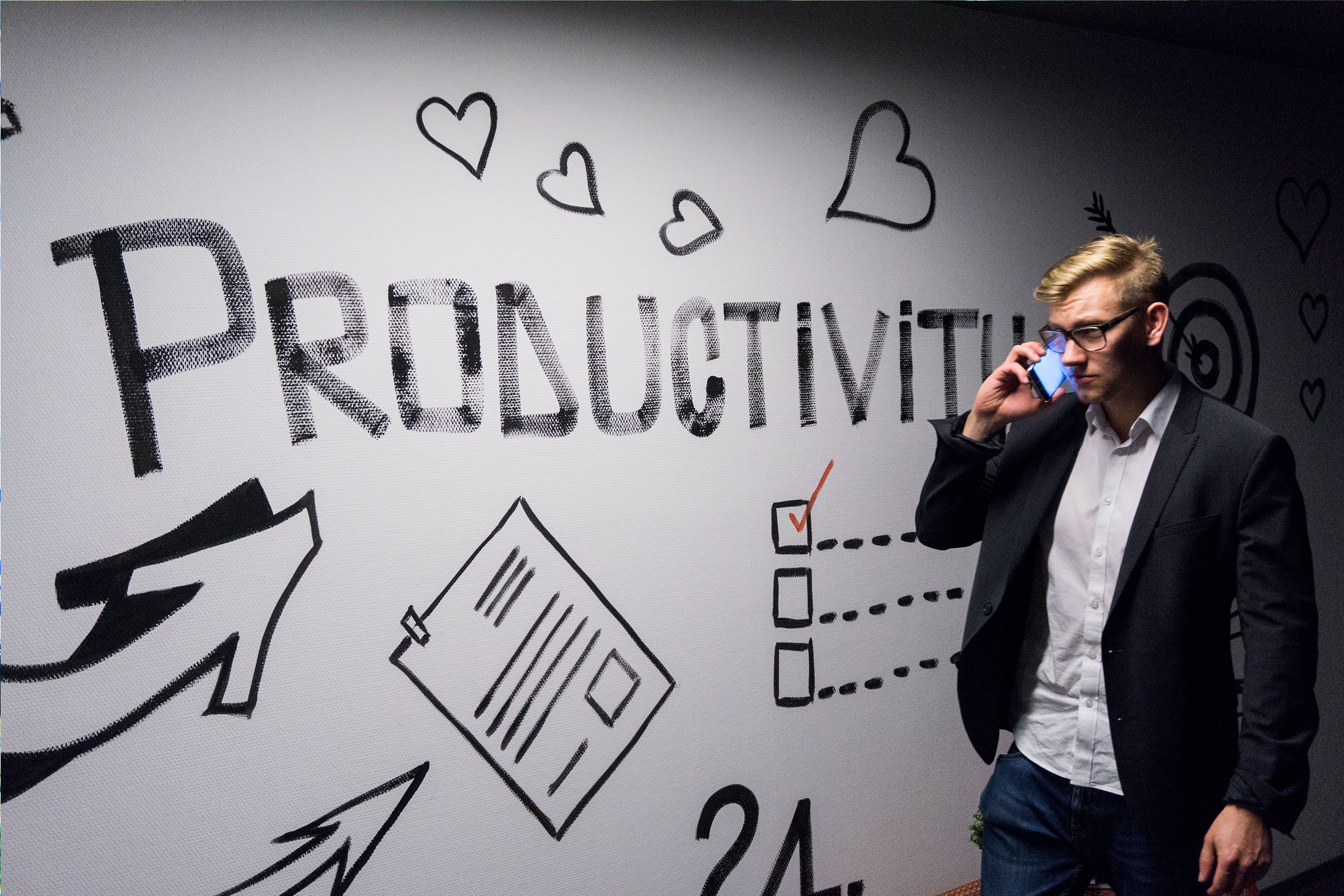
by Kate Evert | Jan 22, 2020 | Productivity, Work Place
In the early 1990s, I lived in Japan, and was taken aback the first few times I saw people get on the subway, and go about their daily business wearing surgical-type masks whenever they were sick. Over time, I started to realize what a smart practice this was. This time of year, I wish my fellow Americans would put medical masks on as they sneeze and cough spreading their germs all around.
So, is it okay to call in sick with a common cold? Should you tough it out and keep working or go back to bed—for everybody’s sake? Having a cold doesn’t really warrant a day off; or does it? Rachel Suff, senior policy adviser at the Chartered Institute of Personnel and Development (CIPD), suggests, “If you are really not well and your symptoms mean you are not going to be productive, it’s better to [call in] sick [rather than] spreading your germs around the workplace.” It’s also important to remember to “be more mindful of those with severely compromised immune systems” or those caring for others with compromised immune systems.
If you still can’t shake that cold, don’t be afraid to take the day off. You (and your co-workers) will be glad you did. Read More Here

by Kate Evert | Jan 15, 2020 | Productivity
Would you like permission to not get everything done on this year’s to do list and have the scientific evidence to back it up? Now armed with neurological, demographic, and technological reasons why planning for the year to come is not actually the best way to reach your potential, you can instead let things slip onto next year’s list and still feel good about it.
It’s human nature to pay more attention to what’s right in front of us and to focus more on our immediate future, but it’s equally important to start planning for the next decade. In a recent Forbes article, Nell Derick Debevoise points out that not only have our attention spans shortened but that one’s life expectancy has also increased, thus solidifying our need for long term planning. She suggests strategies like mindfulness practice “to slow your thinking down” and using the Eisenhower Matrix to prioritize what’s urgent and not urgent and then work accordingly.
Here’s to planning for your decade! Read More Here

by Kate Evert | Jan 8, 2020 | Productivity, Work Place
I stumbled across this article in the Economist several months ago, but when pondering New Year’s resolutions, its content came back to me. Few will be in a position to enact the sorts of suggestions that the authors of It Doesn’t Have to Be Crazy at Work recommend, but if you are, I encourage you to contemplate some of their ideas.
The authors, Fried and Heinemeier Hansson, have a strategic approach for fostering the ideal company culture. Their employees work less hours, attend fewer meetings, and get more vacation time. They contend that they would prefer to invest in these perquisites rather than those they consider a waste: free dinners, office game rooms, and snack bars.
You do not need to copy their business techniques, but you should consider the rationale behind their decision making. Fried and Heinemeier Hansson recognize the need for deep work, and that often the office layout and culture makes it nearly impossible to accomplish any work! These authors understand the true cost of human capital when they do the math: “Eight people in a room doesn’t cost one hour, it costs eight hours.”
In the current labor shortage, if you take any of these ideas to heart, you should be doing so to attract and retain the very best of a limited labor pool and to make sure that you give employees the optimum environment in which to use their talents. Read More Here

by Kate Evert | Aug 16, 2018 | Productivity, Work Place
About 20 years ago, a client called me exasperated. A brand-new CEO from out-of-town had made a decision without consulting HR: the company’s headquarters was leaving the Loop and moving to the suburbs. His main fear was losing experienced staff who would have no way of reaching the new suburban location. But a year later, this same client called me, and labor markets were not his only issue. In the year that he had stopped taking the train, which involved a slight walk across town, and started driving to work, he had gained 20 pounds.
Well it turns out that this is not just an anecdotal story. There is growing evidence that commuting to work, especially commuting via public transportation, can be very beneficial to your health and your career. In a BBC article this month, David Robson highlights some of the benefits of the commute.
The commute provides time to transition between your roles at home and at work. It can be hard to switch mindsets so quickly, and this can often add conflict and stress at work. Jon Jachimowicz of Columbia Business School suggests that “a few moments thinking about the day in front of you can therefore ease the change of gears, reducing the stress once you arrive in the office.” He has found that “people who engage in ‘work-related prospection’ tend to weather the stresses of the journey better than people whose minds wander aimlessly.” By using the time spent commuting to think about your upcoming day, work week, and plans to achieve your goals, it leads to greater daily job satisfaction.
Commuting after work also offers time for reflection. Francesca Gino of Harvard Business School found that workers performed 20% better when given 15 minutes of reflection time at the end of every day. Setting aside time to reflect on the day during a commute could increase productivity and lead to a sense achievement.
And indeed there is the benefit of greater physical health. A Taiwanese study found that people who used public transportation were 15% less likely to be overweight compared to those who traveled by car. Richard Patterson of Imperial College London found that about a third of public transportation commuters met the recommended 30 minutes of exercise a day during their commute alone. Now no one is suggesting that exercising during a commute should replace other physical exercise, but it’s an unexpected perk.
Lower stress levels and better fitness? We’ll sign up for that commute any day. Read More Here

by Kate Evert | Aug 1, 2018 | Productivity, Work Place
It may seem appealing, and even luxurious to be able to work from home in your pajamas, or work remotely while sipping lattes at a local outdoor cafe. There is a growing body of research that highlights the drawbacks of WWWBS (Working While Wearing Bunny Slippers).
In a recent Crain’s Chicago Business article, Ryan Bonnici highlights how remote work may not improve our work-life balance Read more here. He cites studies that suggest working remotely creates many problems. One, the reduction in social interaction leads to people becoming more lonely and isolated. Another downside is that work often continues during off hours, since “the office never closes.” Research also indicates that working alone inhibits the sort of “spontaneous interactions” that encourage creativity and promote collaboration.
Other recent articles on this topic include this laundry list of issues Fast Company assembled. If you’re STILL not running back to a cubicle, you can read about how disruptive working from home is to a team environment from The Week.
Where do we sit … on this topic? It depends.
It depends on the nature of the work, the time in a person’s career, the type of work someone does, the current child and elder care issues at home. It depends on a person’s personality! Perhaps an employee needs both stimulation AND isolation to complete their assignments. What should the best solution depend upon? A manager that understands their employees and the unique skills and talents each brings and what environment(s) allow each to thrive, together and individually … so that the organization gets the greatest return on Human Capital.
So don’t throw away the bunny slippers just yet …

by Kate Evert | Jul 25, 2018 | Compensation, Human Capital, Productivity, Work Place
In a recent New York Times article, Charlotte Graham-McLay shares that a New Zealand firm reduced its workweek to 32 hours, while still paying employees for 40 hours. The trial was such a success that the firm is planning on making the change permanent. The firm found that workers wasted less time and increased their productivity while at work.
“Jarrod Haar, a human resources professor at Auckland University of Technology said employees reported a 24 percent improvement in their work-life, and came back to work energized after their days off.”
Aside from company productivity, Andrew Barnes, the firm’s founder, believes the change in hours could also offer economical and environmental implications if more companies embraced a similar approach.
This isn’t a solution for all companies, but an inspiration to innovate. What was it about this schedule that led to this workforce increasing their productivity? What changes could your company make to increase its productivity? Read More Here






